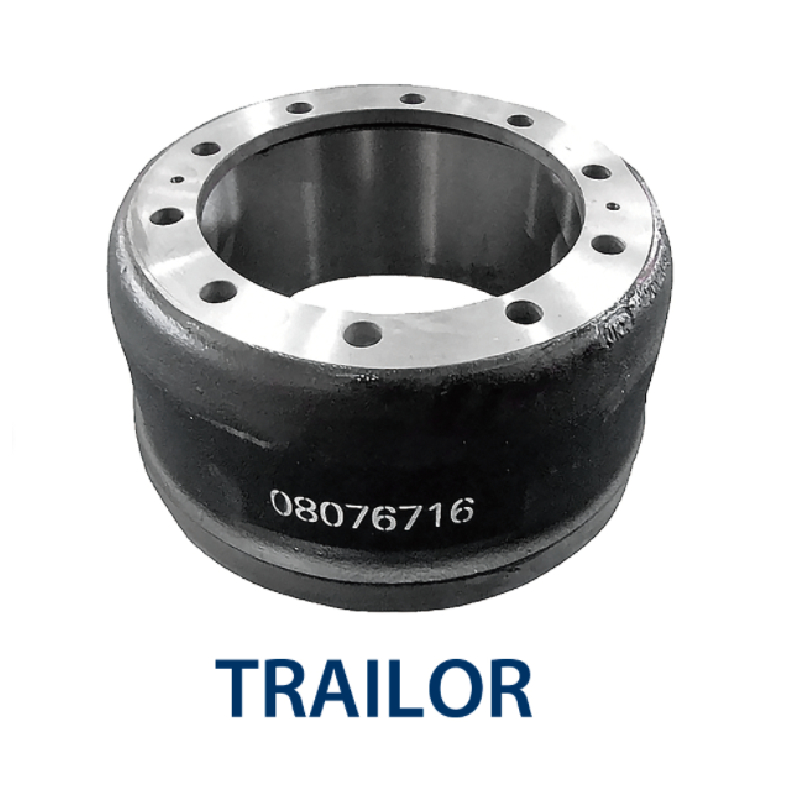Nov . 16, 2024 01:56 Back to list
brake drum and brake shoe
Understanding Brake Drum and Brake Shoe Essential Components of Vehicle Braking Systems
When it comes to vehicle safety, a well-functioning braking system is paramount. Among the crucial components involved in this system are the brake drum and brake shoe. These parts work in tandem to help vehicles stop efficiently and safely. In this article, we will delve into the workings of brake drums and brake shoes, their importance, and when they might require maintenance or replacement.
The Basics What Are Brake Drums and Brake Shoes?
Brake Drum The brake drum is a cylindrical component typically made of cast iron or aluminum, designed to withstand heat and pressure. It is attached to the wheel hub and rotates alongside the wheel. When the driver applies the brakes, the brake drum acts as a surface against which the brake shoes press to create friction, ultimately slowing down or stopping the vehicle's motion.
Brake Shoe The brake shoe is a curved piece of metal with a layer of friction material (similar to that of brake pads) that interacts with the brake drum. When the brakes are applied, the shoes are pushed outward against the inner surface of the rotating brake drum. This contact generates the friction needed to reduce the vehicle's speed or bring it to a halt.
How the Brake System Functions
The operation of brake drums and shoes is part of a broader system known as drum brake systems, which have largely been used in older vehicles and some modern designs for specific applications, such as rear brakes. When a driver presses the brake pedal, hydraulic fluid is transmitted through the brake lines to the wheel cylinders located at each brake drum. The wheel cylinders expand and push the brake shoes outward against the drum.
The friction created by this contact generates the necessary braking force. As the drum slows down, so does the vehicle, allowing for a controlled stop. Once the driver releases the brake pedal, springs within the brake assembly retract the brake shoes, allowing them to return to their original position.
Importance of Brake Drums and Brake Shoes
The significance of these components cannot be overstated. They are fundamental to the overall effectiveness of a vehicle's braking system. If either the brake drum or brake shoe is worn out or damaged, the braking performance can be severely compromised. Common issues include reduced stopping power, increased stopping distances, and potential noise during braking operations.
brake drum and brake shoe

In particular, worn brake shoes can lead to metal-on-metal contact with the brake drum, which can cause scoring or damage to the drum itself. This, in turn, necessitates more extensive repairs or replacements, potentially increasing the overall cost to the vehicle owner.
Signs of Wear and When to Replace
Regular maintenance is key to ensuring the longevity and effectiveness of brake drums and shoes. Here are some common signs that may indicate the need for replacement
1. Squeaking or Grinding Noises If you hear unusual sounds when applying the brakes, it may indicate that the brake shoes are worn down and need replacement. Grinding noises often signify that the shoes have completely worn through, damaging the drum.
2. Reduced Braking Performance If you notice that the vehicle takes longer to stop, it may be a sign that the brake components are not functioning optimally.
3. Vibration During Braking A pulsating feeling in the brake pedal can indicate that the brake drum is warped or scored, which may also point to the need for new shoes.
4. Visual Inspection A visual check of the brake components can help determine their condition. If the brake shoes are less than a quarter inch thick, or if you notice any cracks or other damages, it is time for a replacement.
Conclusion
Brake drums and brake shoes are vital for the safe operation of vehicles, ensuring that drivers can stop quickly and effectively. Regular maintenance and timely replacement of these components can prevent dangerous situations on the road and ensure a smoother driving experience. Whether through routine checks or professional inspections, staying vigilant about your vehicle's braking system will contribute to safety for you and others on the road. Always consult a qualified mechanic when in doubt about the condition of your brake system components. Your safety depends on it.
-
HINO Industrial Solutions - ¡Ң���ຽ��е��������˾ | Advanced Technology&Reliability
NewsJul.13,2025
-
HINO Industrial Efficiency-Jiangsu Hino Industrial|Productivity Optimization&Cost Reduction
NewsJul.12,2025
-
HINO-¡Ң���ຽ��е��������˾|Advanced Industrial Solutions&Energy Efficiency
NewsJul.12,2025
-
Premium Brake Drum Iveco – Durable Drum Brake Drum & Brake Shoe Solutions
NewsJul.08,2025
-
High-Performance Brake Drum Liza for Enhanced Safety Reliable Drum Brake Drum & Brake Shoe Solutions
NewsJul.08,2025
-
High-Quality Brake Drum MAZ – Durable Drum Brake Drum & Brake Drum and Brake Shoe for Optimal Performance
NewsJul.07,2025
